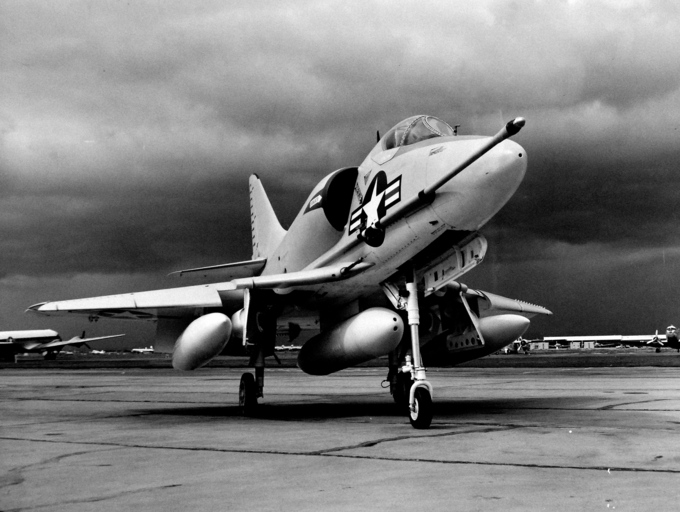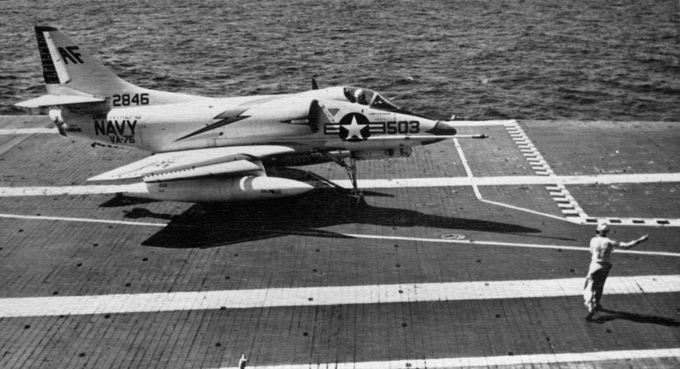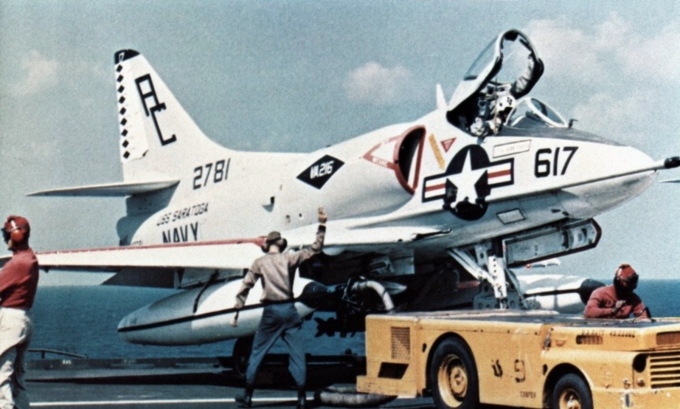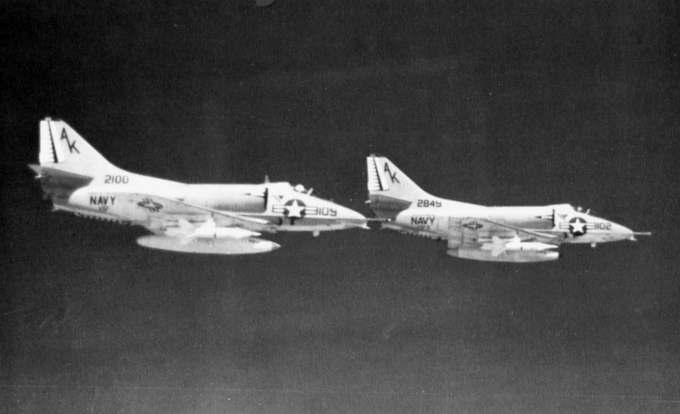As they entered the Cold War, American attack aircraft consisted of lofting propeller aircraft that could carry enormous payloads to strike critical targets or support the troops on the ground. As such, when searching for the successor for the AD Skyraider attack aircraft, one could be surprised to see that such a small aircraft like the A-4 was chosen to continue the legacy. However, its tiny stature proved ideal for the confined aircraft carrier spaces of the US Navy and US Marine Corps and helped perform many strike missions into areas like North Vietnam.
At a time when military aircraft were becoming more substantial in size to hold larger engines, more weapons, essential fuel, and new technology, Douglas Aircraft's concept of the A-4 Skyhawk seemed counter-intuitive. The A-1 Skyraider, while a potent aircraft, was starting to age out of the service as faster jets began to supplant the propeller-driven attacker. In the early 1950s, the U.S. Navy began its search for the next-generation attacker and put out a requirement for an attacker with a maximum cost of $1 million and a maximum empty weight of 20,000 lbs (9,071 kg) and could carry enough ammunition to at least compete with the older but beefy A-1.
Ed Heinemann, a designer at Douglas Aircraft Company, responded with the XA4D-1 attack aircraft. Contrary to conventional wisdom, Heinemann's design focused on an attack aircraft that would be minimal in size and weight along with being a simple aircraft to maintain. Douglas Aircraft succeeded in winning the contract and what became known by nicknames such as "Scooter" or "Bantam Bomber", the XA4D-1 (later changed to A-4) was a winning solution to the Navy's needs. The resulting attack aircraft came in at just over $850,000 each while weighing half of what was the Navy's original specification; owing to weight savings with the wings, being as short as they were, there was no need for them to fold to save space while stowed on an aircraft carrier. "Scooter" was an appropriate nickname for the A-4 as its original prototype set a world speed record in 1955 with a speed of 695.163 mph (1,118.756 km/h).
The A-4, though small in size, did not differ much in design from other military aircraft of the day. The wing was a low-mounted delta shape that had single forge spars that spanned to both wingtips for extra strength. Tricycle configuration for the landing gear allowed the nose to remain relatively low for excellent pilot visibility, mainly when operating on the deck of an aircraft carrier. A single turbo-jet engine mounted at the rear of the aircraft was fed by two air intakes located just behind the cockpit on each side of the fuselage. Offensive weapons for this aircraft consisted of two 20 mm Browning-Colt Mk12 Mod 3 autocannons, each one located in a wing root. Only 100 rounds are available for each gun. Still, a single fuselage centerline hardpoint and a hardpoint under each wing allow for the utilization of a wide variety of missiles, rockets, bombs, and gun pods.
The A-4B differed from the original A-4A with improved navigation features, flight control systems, an air-to-air refueling capability, and the capability to fire the AGM-12 Bullpup missile.
At the start of the Vietnam War, though succeeding variants of the A-4B Skyhawk existed, the A-4B Skyhawk remained as one of the Navy's primary light bombers. A total of 542 A-4Bs were built and delivered to the Navy. Upgrades over the A-4A consisted of improved navigation equipment and flight control systems. AGM-12 Bullpup missiles were also a new weapon for this aircraft. The Skyhawk also utilized the AIM-9B Sidewinder missiles; however, these were mostly used as a defensive weapon and rarely for offensive purposes.
The overall A-4 Skyhawk was a rugged little attack aircraft that remained in service with both the U.S. Navy and Marine Corps for over 20 years before being retired with the A-7 Corsair II replacing it in the US Navy, though the A-4 continued to serve as an adversary role in training for many more years after its retirement from combat service. Outside the United States, the A-4B saw some use in foreign service. Two prominent buyers were Argentina, which purchased 66 ex-US Navy A-4Bs that were rebuilt as A-4Ps and A-4Qs (50 A-4P for the Argentine Air Force and 16 A-4Q for the Argentine Naval Aviation), and Singapore, which purchased a mix of A-4Bs and A-4Cs. The Argentine A-4s saw combat during the Falkland Wars and damaged and sunk numerous British Royal Navy ships during the conflict.





